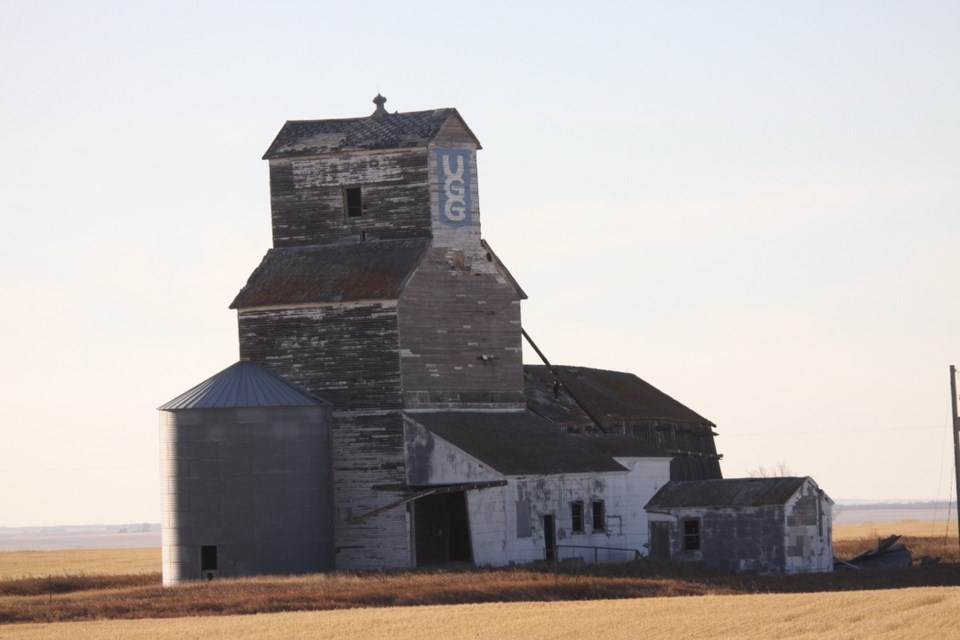The weather-beaten grain elevator sits in the middle of a wheat field — an untended monument to the past.
Only the still visible UGG letters on the north side identify the former owner — United Grain Growers.
The stubble-covered field six miles south of Brownlee was once a thriving hamlet called Lake Valley.
Today, the only other reminder of the community is a large white boulder along the grid road with a plaque commemorating the hamlet and about 50 families once living in the town and district.
It’s hard to imagine this quiet field once reverberating with sounds of drivers urging horses, mothers calling children, children’s laugher, or the noise of arriving trains.
The trill of the occasional meadowlark breaks the silence now.
According to the community history book, Combining Communities, the Lake Valley name came from the location between the Qu’Appelle River to the north and Pelican Lake to the southwest.
Originally, the place was called Lindstrom when the land was purchased for settlement in 1903 from a woman called Lindstrom.
Within a few years, Lake Valley boasted the commercial outlets of thousands of Prairie communities — butcher shop, two banks, two stores, school, church, barber shop, pool hall, lumber yard, railway station, restaurant and blacksmith shop — located in a two-block space.
Sports, particularly baseball and hockey, were a main pastime in those years. Lake Valley was no exception developing ball diamonds, skating rink, tennis and basketball courts.
The Lake Valley All Stars ball team succeeded at many tournaments across the Prairies in the 1940s and 1950s.
The Grand Truck Railway, now the CNR, decided in 1910 to build a rail line from Moose Jaw northwest to Central Butte through places like Archydal, Lake Valley, Rowletta, Eskbank, Darmody and Mawer.
Like Lake Valley, none of these remain except as memories and dots on old maps.
Coming of the railway in 1913 meant three trains a week with a mail train. Passengers could travel by train from 1931 until 1972 on the “skunk train’’ named for the smell from the engine.
Railways need bulk freight to keep running. Lake Valley obliged with construction of two grain elevators.
The Warner Grain Co. built the first elevator in 1916. The elevator changed hands twice in five years, perhaps indicating the thin profit margins competing with another local plant and those in Brownlee, just six miles away.
This elevator was sold in 1930 and closed in the 1960s. The company told customers it was unable to find employees.
A second elevator was built in 1922 by local farmers in the early stages of the co-operative elevator movement then sold to the Saskatchewan Wheat Pool in 1928. It closed in 1965.
Closure of the elevators signalled the end of the railway as no grain could be hauled. By 1986 the railway got permission to abandon the line.
Seven years after the school district was formed, the first one-room school was built in 1913, replaced by a two-room brick school in 1922.
The school was plagued by disaster, damaged by a tornado in 1929, gutted by fire in 1936 when embers from the ash pile were ignited by wind.
Around 80 students attended elementary and high school in the 1930s. Buses started taking students to other communities in 1957 as a wave of school closures swept the province.
The school closed in 1967.
Ron Walter can be reached at [email protected]




